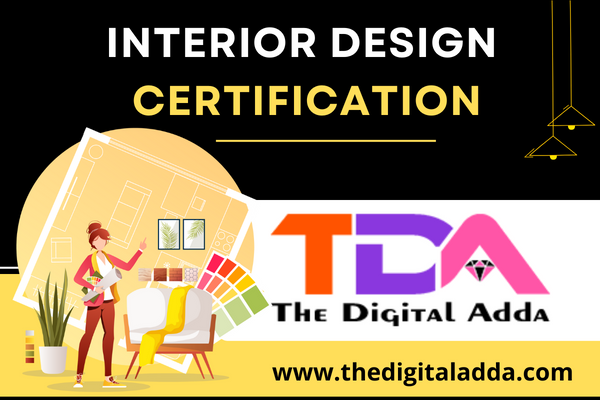Interior Design FREE Certification – The Digital Adda
Interior design is the art and science of enhancing the interior of a space, such as a room or a building, to create a more aesthetically pleasing and functional environment. It involves the selection and arrangement of furniture, decor, color schemes, lighting, and other elements to improve the overall look and feel of a space. Interior designers are professionals who specialize in planning and executing interior design projects.
Here are some key aspects of interior design:
- Aesthetics: Interior designers focus on the visual aspects of a space, including color, texture, patterns, and style. They aim to create a harmonious and visually appealing environment that reflects the client’s preferences and the intended purpose of the space.
- Functionality: In addition to aesthetics, functionality is a crucial consideration in interior design. Designers must ensure that the space serves its intended purpose efficiently and comfortably. This involves space planning, furniture arrangement, and traffic flow analysis.
- Space Planning: Interior designers carefully plan the layout of a space to make the best use of available square footage. They consider the placement of furniture, fixtures, and other elements to optimize the use of space.
- Color and Lighting: The choice of colors and lighting can significantly impact the mood and ambiance of a room. Designers select color palettes and lighting solutions that complement the space and create the desired atmosphere.
- Furniture and Decor: Interior designers help clients select furniture, furnishings, and decor items that match the overall design concept. They may also recommend custom furniture or built-in storage solutions to maximize space.
- Materials and Textures: Designers choose materials and textures for surfaces such as flooring, walls, and ceilings. These selections affect both the visual and tactile experience of the space.
- Style and Theme: Clients often have specific design styles or themes in mind, such as modern, traditional, minimalistic, or eclectic. Interior designers work to capture and execute these styles effectively.
- Budget Management: Interior designers often work within a budget defined by the client. They must balance the client’s design preferences with cost-effective solutions.
- Sustainability: Sustainable and eco-friendly design practices are becoming increasingly important in interior design. Designers may recommend energy-efficient lighting, eco-friendly materials, and sustainable furniture options.
- Project Management: Interior designers manage all aspects of a design project, from initial concept and planning to procurement, installation, and final decoration. They often work closely with architects, contractors, and suppliers.
- Client Collaboration: Effective communication and collaboration with clients are essential. Designers must understand the client’s needs, preferences, and lifestyle to create a personalized design.
- Regulations and Codes: Interior designers must be aware of building codes, safety regulations, and accessibility requirements that apply to interior spaces. Compliance with these standards is crucial, especially in commercial and public spaces.
Interior design can be applied to various settings, including residential homes, offices, retail spaces, restaurants, hotels, healthcare facilities, and more. The goal is to create spaces that not only look visually pleasing but also enhance the quality of life or work for the people who use them. Interior designers use their expertise to transform spaces into functional and aesthetically pleasing environments.











